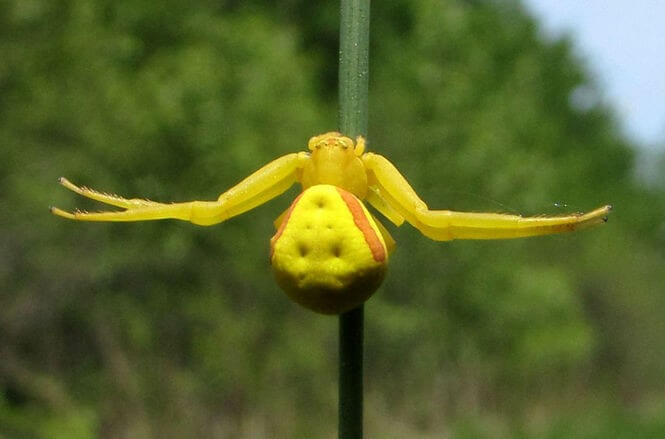Spiders, fascinating members of the ‘Arachnids’ group, boast a unique anatomy with two body segments and eight legs, distinct from the six-legged insects.
Many are unaware of this difference, mistakenly categorizing spiders as insects. Understanding these creatures can be enlightening, especially considering their role in ecosystem balance through pest control.
However, their presence can be unnerving, particularly for those suffering from Arachnophobia, the most prevalent phobia today. To alleviate fears, knowledge is key.
This guide, complete with a spider identification chart, aims to educate and intrigue, providing insight into the various spider types.
Types of Spiders
1. Tarantula
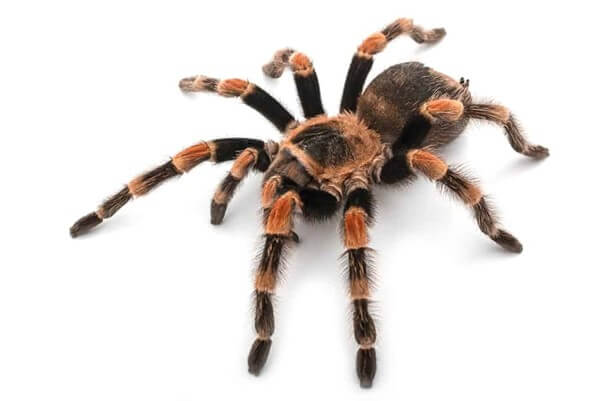
Tarantulas, often perceived as large and intimidating, are diverse in size and behavior. While some species can grow large, with females typically larger than males, the largest tarantulas reach about 11 inches in leg span.
Their appearance, characterized by a hairy body, varies in color from browns and blacks to more vibrant hues in certain species. Contrary to popular belief, tarantulas do not use webs to capture prey.
Instead, they are active hunters, using their size and strength. Despite their fearsome reputation, most tarantulas are not dangerous to humans. Their venom is typically not harmful beyond a bee sting’s pain level.
Some species, known for their docile nature, are even popular in the pet trade. However, their behavior can vary, and they might display defensive postures if threatened.
2. Brown Recluse Spider

The Brown Recluse Spider, also known as the Violin Spider due to a violin-shaped mark on its back, typically has a light to dark brown coloration.
This species is distinct from many other spiders, possessing only six eyes instead of eight. Brown Recluse Spiders have a relatively smooth appearance.
These spiders are smaller, typically between 0.24 to 0.79 inches. They are often found in undisturbed, secluded areas like storerooms, garages, and basements.
While their venom can cause significant medical issues in humans, they are not aggressive and bite only in self-defense. Brown Recluse Spiders use non-sticky webs primarily for retreat rather than capturing prey.
3. Camel Spider
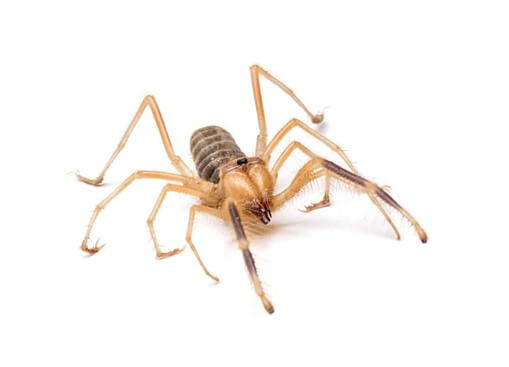
Camel Spiders, also known as Wind Scorpions or Sun Spiders, are not true spiders or scorpions but belong to the order Solifugae.
They are known for their large size, with some reaching up to 6 inches, but they are typically smaller. These creatures have a unique appearance with large, prominent jaws.
They do not possess enlarged eyes but have a pair of median eyes and no lateral eyes. Their coloration ranges from tan to dark brown, allowing them to blend into their desert environments.
Camel Spiders are solitary and nocturnal, often found hiding under rocks or in sandy areas. They are known for their remarkable speed, moving up to 10 mph, and they primarily feed on various small animals, including insects and small vertebrates.
4. Black Widow Spider

The Black Widow Spider is recognized for its venom, particularly potent in females, and can cause significant pain and discomfort.
Females are easily identified by their glossy black bodies with a distinctive red hourglass-shaped mark on the underside of their abdomen. In contrast, males are smaller, lighter in color, and less venomous.
Black Widows are found predominantly in warmer regions, including parts of North America and Mexico. They prefer secluded spaces and are known to be more active in warmer temperatures.
Their diet primarily consists of insects, which they capture using their webs. While their venom is dangerous, fatalities are extremely rare due to the availability of effective antivenoms.
5. Wolf Spider

Wolf spiders are robust and agile hunters, named more for their hunting prowess than their appearance. They have eight individual eyes arranged in three rows.
Their body size and color vary widely, adapting to different environments. Globally distributed, wolf spiders are commonly found in various habitats, including North Carolina.
Unlike other spiders that spin webs, wolf spiders actively hunt and sometimes dig burrows for shelter, though not all species are burrowers. They primarily feed on insects.
The mating behavior of wolf spiders is unique, with males often performing elaborate courtship rituals to avoid being mistaken as prey by females.
6. Jumping Spiders
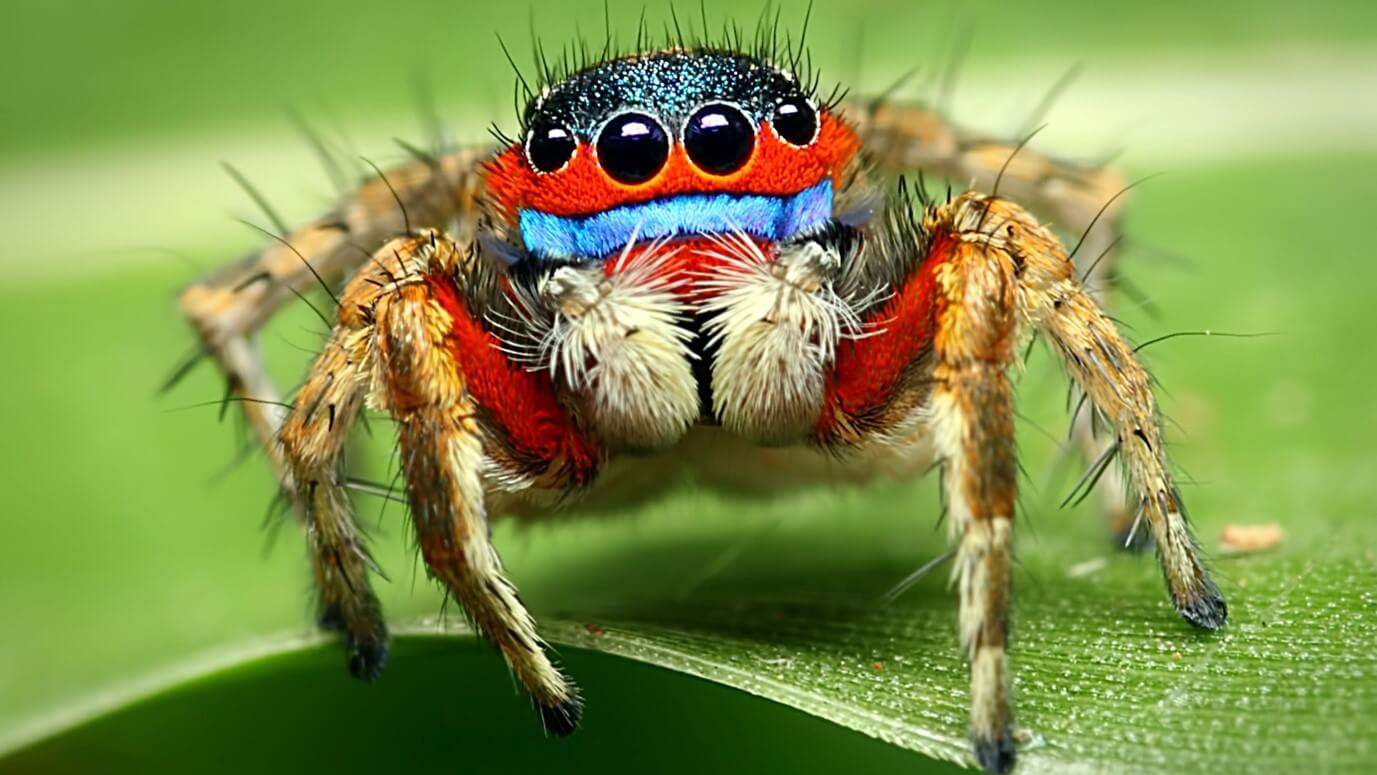
The Jumping Spider family, comprising about 5,000 species, represents a significant portion of the spider population, estimated to be around 13% globally.
These spiders are easily recognizable by their unique eye arrangement: four large eyes in a single row, with the pair in the middle particularly prominent, contributing to their excellent vision.
Unlike many spiders, Jumping Spiders possess a well-developed internal respiratory system that includes both lungs and a tracheal system.
Known for their remarkable jumping ability, these spiders do not use silk for jumping but for safety lines as they leap.
They are active hunters in various habitats, typically feeding on insects, including forests, grasslands, and mountainous regions.
Their ability to adapt to different environments is key to their survival.
7. Goliath Bird-Eater Spider
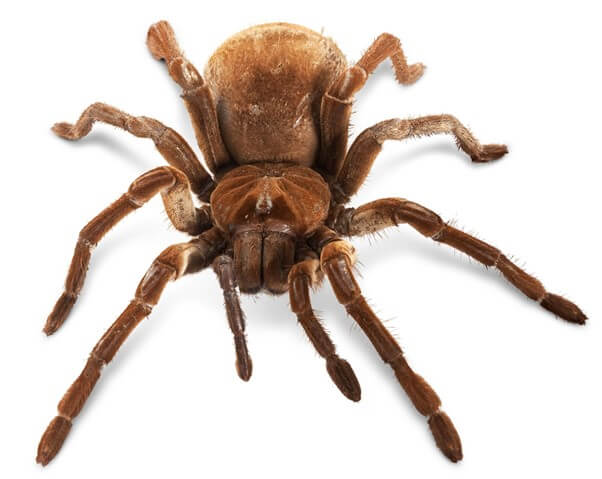
The Goliath Bird-Eater, part of the Tarantula family, is one of the largest spiders by mass. Its name is somewhat misleading, as its diet primarily consists of insects and small mammals, not birds.
The “bird-eater” label originated from an observation of one eating a hummingbird, which is uncommon. These spiders, native to the rainforests of South America, are known for their large size, with a leg span reaching up to 11 inches.
They create burrows in the ground, similar to some wolf spiders, but are not typically aggressive towards humans.
Their defensive mechanism includes making hissing sounds by rubbing their legs together. Despite their intimidating appearance, their venom is not lethal to humans.
8. Golden Silk Spider
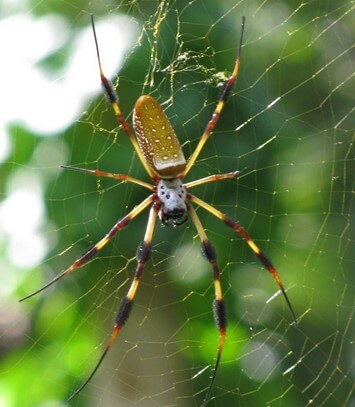
The Golden Silk Spider, known for its unique golden-hued web, is called the “Giant Wood Spider” or “Banana Spider.” The silk’s color, which ranges from yellow to gold, contributes to the effectiveness of its web in sunlight.
This spider exhibits varied coloration, including shades of red, green, yellow, black, and brown, with females being larger than males.
Commonly found in warmer climates, these spiders have a wide distribution, including regions like Madagascar, Australia, and the United States.
They rely more on their other senses than vision, detecting danger through vibrations. Their diet mainly consists of insects and small animals, and while venomous, they are not typically a threat to humans.
9. Brazilian Wandering Spider
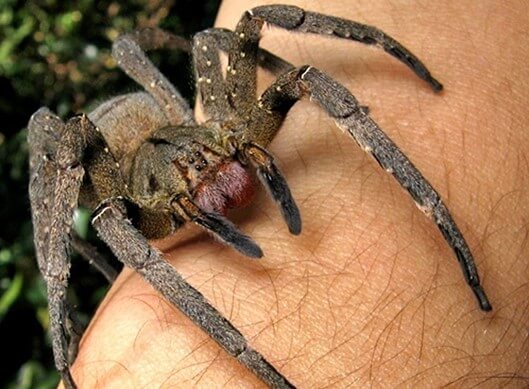
The Brazilian Wandering Spider, often cited as one of the world’s most venomous spiders, is known for its potent venom. It typically grows to about 5 inches in leg span.
Found primarily in South American tropical forests, including Brazil, Peru, and Colombia, this spider is not restricted to jungles and can occasionally be found in populated areas.
It has gained attention for occasionally hiding in shipments of bananas, but this is not its typical habitat. Known for its aggressive behavior when threatened, the Brazilian Wandering Spider is a nocturnal hunter, actively seeking prey rather than using webs.
10. Hobo Spider

The Hobo Spider, commonly considered aggressive, is less dangerous than often portrayed. Their coloring is typically uniform, with a brownish hue and characteristic V-shaped patterns on their abdomen, but they don’t usually have prominent spots.
Originally from Europe, they have spread to various regions, including the Northwestern United States. Their presence in new areas is attributed to human activity, such as transportation and trade.
Contrary to their reputation as fearsome, Hobo Spiders are not commonly encountered in homes, and their venom is not considered a significant medical threat to humans. They create funnel-shaped webs for catching prey like insects.
Spider Identification Chart
| Sr No. | Name | Identification | |||||
| Picture | Color | Body | Area | Diet | Feature | ||
| 01. | Tarantula |  |
Grey, Brown, and Black
Dark Lines on Legs |
8-12 inches long
Big size & hairy body |
Various parts of Africa | Small insects and bugs | Unable to make webs |
| 02. | Brown Recluse |  |
Brown, Cream, Grey, Black | Six sets of eyes | Backyards, Sheds, Attics, and other dark areas | Pests like crickets and roaches | Violin like shape |
| 03. | Camel Spider |  |
Range of brown color from tan to dark hues | 3-6 inches long
Big-eyed |
Under the rocks, wooden board sheds | Rodents, lizards, termites, beetles | Fast speed
Store food in the form of fat |
| 04. | Black Widow |  |
Dark body with red spots
White color |
Have venomous glands.
Females double the size of male |
Warm areas of the United States, Mexico, Canada | Roaches, Insects, and Beetles | Most dangerous Spider in the world with lethal venom |
| 05. | Wolf Spider |  |
Color depends on varying areas | Eight eyes vary in size & shape.
Muscular |
Coastal, Suburban areas of North Carolina | Crickets and Flies
Eats like a wolf |
Face Resembling a Wolf
Dig Burrows deep in the earth |
| 06. | Jumping Spider | 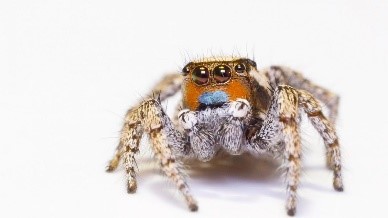 |
Variety of Colours | Four large Eyes lined in a single row | Forests, woodlands,
Grasslands, Mountainous areas |
Bugs and other small insects | Have lungs and tracheal system.
Jump with the help of silk |
| 07. | Golden Silk Spider | 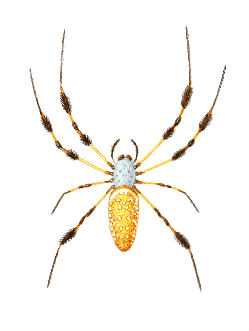 |
Red, Green, Yellow, or Black | Grows up to 2 inches long.
White spots on the abdomen and legs |
Madagascar,
Australia, USA (Texas and Carolina) |
Flies, Moths, Grasshoppers, Tiny Snakes | Unable to see appropriately.
Golden colored silk Webs are zig zag style |
| 08. | Goliath Bird-Eater | 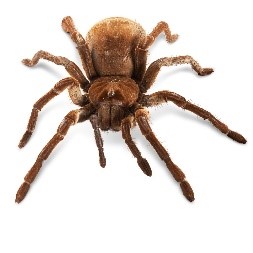 |
Dark shades of Brown and Black | Leg Span of about 12 inches | Rainforests of South America | Small Birds and Insects | World’s Biggest Spider
Show anger by hissing and rubbing legs |
| 09. | Brazilian Wandering Spider |  |
Variety of Colours | Can reach up to 6 inches | Forests in Peru, Columbia, Costa Rica, Brazil, and Paraguay | Small Bugs and insects | Claimed as the deadliest Spider.
Hiding places include banana crates |
| 10. | Hobo Spider |  |
Brown shade with black spots on bodies | The central region of the abdomen has V marks with two spinnerets | Europe and some parts of the United States, mainly Seattle | Silverfish,
Flies, Beetles, Roaches |
Excellent Hider
Have Poor Vision |
Conclusion
In conclusion, exploring the diverse and fascinating world of spiders through this guide educates and demystifies these often misunderstood creatures.
From the immense Tarantula to the venomous Black Widow, each spider possesses unique characteristics and plays a vital role in our ecosystem.
Understanding their behaviors and habitats and identifying features is crucial, especially for those with arachnophobia.
This comprehensive overview of various spider types, complete with pictures and names, serves as a valuable resource for anyone interested in learning more about these intriguing arachnids.
Whether for educational purposes, overcoming fears, or simply satisfying curiosity, this guide offers a detailed window into the world of spiders, showcasing their importance and the beauty of biodiversity.

